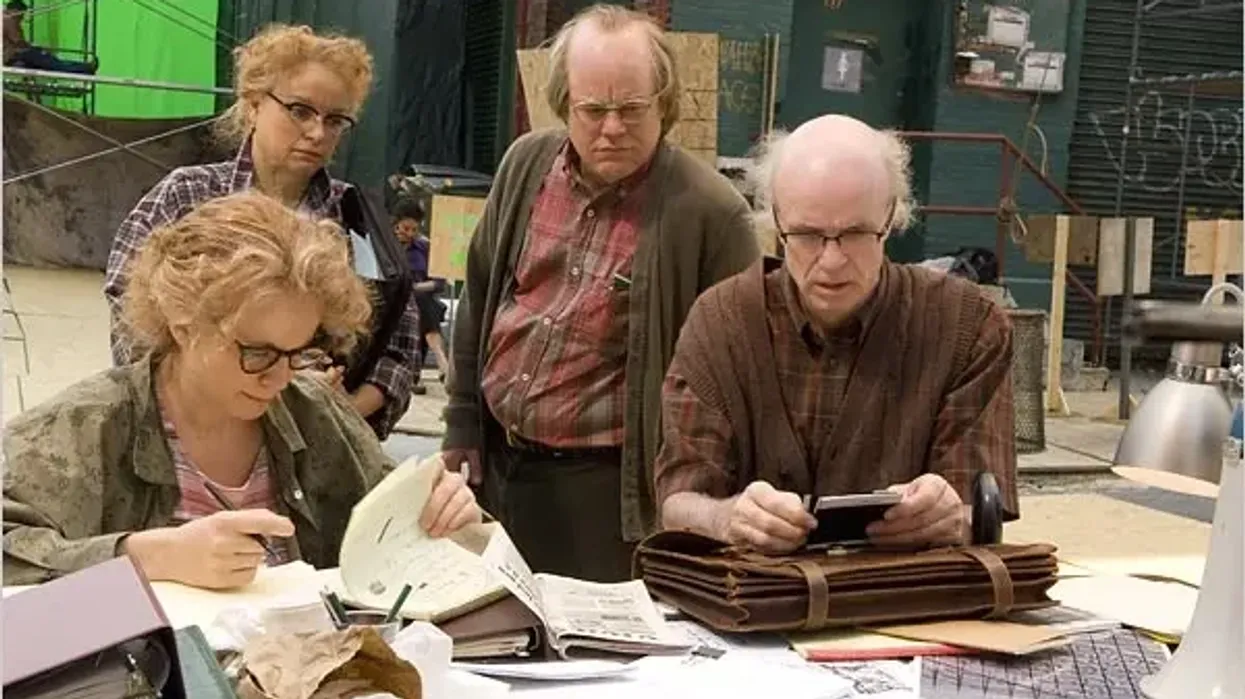What Is Synecdoche (Definition and Examples)
It's time to find the perfect substitute.

'Synecdoche, New York'
In the world of cinema, literary devices can be a writer and director's secret weapon. Today, we're going to cover "synecdoche".
In this article, we will explore the definition of synecdoche and provide you with some insightful examples of how it is used effectively in film.
Let's dive in.
"What is a Synecdoche?": A Literary Guide for English Students and Teacherswww.youtube.com
Synecdoche Definition
Synecdoche is a figure of speech that involves substituting a part of something for the whole or vice versa. It is derived from the Greek word "synekdoche," which means "simultaneous understanding."
In essence, synecdoche creates a sense of unity between the part and the whole, allowing filmmakers to convey complex ideas, emotions, or themes in a concise and evocative manner.
Why Do Filmmakers Use Synecdoche?

'The Lord of the Rings: The Fellowship of the Ring'
Credit: New Line Cinema
Filmmakers use synecdoche for several compelling reasons, as this literary and cinematic device offers them a range of storytelling advantages:
- Condensing Complex Ideas: One of the primary reasons filmmakers use synecdoche is to condense complex ideas or themes into a single, easily recognizable symbol or element. This simplification helps convey abstract concepts more effectively to the audience. For example, a filmmaker might use a single object or word to represent an entire philosophy or ideology.
- Economy of Storytelling: In cinema, where every frame and moment counts, synecdoche allows filmmakers to tell a story or convey information concisely. Instead of devoting extensive screen time or dialogue to explaining a concept or character, they can use a synecdoche to achieve the same result in a fraction of the time.
- Evoking Emotions: Synecdoche can be a powerful tool for evoking emotions in the audience. By using a simple, relatable symbol or element, filmmakers can create a strong emotional connection or response. For example, a single object can trigger nostalgia, fear, or empathy in the viewer.
- Enhancing Visual Storytelling: Film is a visual medium, and synecdoche is a visual device. Filmmakers can use synecdoche to enhance the visual storytelling by creating memorable and visually striking images or sequences that resonate with the audience.
- Adding Layers of Meaning: Synecdoche adds depth and layers of meaning to a film. It invites viewers to engage with the story on a deeper level by encouraging them to analyze the relationship between the part and the whole. This can lead to discussions and interpretations that enrich the viewing experience.
- Creating Symbolism: Synecdoche often leads to the creation of symbolism within a film. Symbols can be powerful tools for conveying themes, character traits, or narrative arcs. When a particular element is repeatedly used as a synecdoche, it becomes a symbol that carries meaning throughout the film.
- Themes and Motifs: Filmmakers use synecdoche to reinforce and highlight recurring themes or motifs within a film. By returning to the same symbolic element throughout the narrative, they emphasize the significance of that theme or motif in the story.
- Inviting Audience Engagement: Synecdoche can engage the audience's intellect and imagination. Viewers are encouraged to actively participate in interpreting the film, making connections between the synecdoche and other elements in the story, and drawing their own conclusions.
Synecdoche Examples
 'Citizen Kane'Credit: Warner Bros.
'Citizen Kane'Credit: Warner Bros. Sometimes the best way to understand something is to just look at examples, so I pulled some famous ones from moves here to help you understand.
- Hollywood Walk of Fame Stars (Map to the Stars, 2014): David Cronenberg's film uses the Hollywood Walk of Fame stars as a synecdoche for the shallow and superficial nature of the entertainment industry. The stars themselves, which are just inanimate objects embedded in the sidewalk, come to represent the celebrities they commemorate, highlighting the facade of fame and glamour.
- Rosebud (Citizen Kane, 1941): In Orson Welles' masterpiece, the word "Rosebud" is a synecdoche that represents the entire life of the enigmatic and wealthy newspaper magnate, Charles Foster Kane. The use of this single word invites the audience to ponder the complexities of Kane's character and the underlying emptiness of his existence.
- Red Balloon (The Red Balloon, 1956): Albert Lamorisse's short film employs a red balloon as a synecdoche for the fleeting innocence and joy of childhood. Throughout the film, the red balloon becomes a symbol of hope, companionship, and freedom, ultimately representing the child's world.
- The One Ring (The Lord of the Rings Trilogy, 2001-2003): J.R.R. Tolkien's epic fantasy trilogy features the One Ring as a powerful synecdoche for the corrupting influence of power. This small, unassuming ring represents the vast forces of evil that threaten Middle-earth, making it a perfect example of synecdoche in storytelling.
- The Briefcase (Pulp Fiction, 1994): Quentin Tarantino's movie uses a mysterious briefcase as a synecdoche for the unknown and unexplained. The contents of the briefcase are never revealed, leaving it up to the audience's imagination to fill in the details. The briefcase serves as a symbol of the film's overarching theme of the unpredictable and enigmatic nature of life.
By recognizing and understanding synecdoche in cinema, you can gain a deeper appreciation for the art of filmmaking and storytelling.
So, the next time you watch a film, pay close attention to the small details, as they might just be synecdoches that unlock a world of hidden meaning.
Let me know what you think in the comments.
- Check Out This Writing Schedule for New Screenwriters ›
- You Want to Write Like Charlie Kaufman? Read and Download His Screenplays ›
- 50+ Literary Devices You Need to Know for Your Screenwriting ›
- What Do Writers Mean When They Say "Economy in Storytelling"? | No Film School ›











